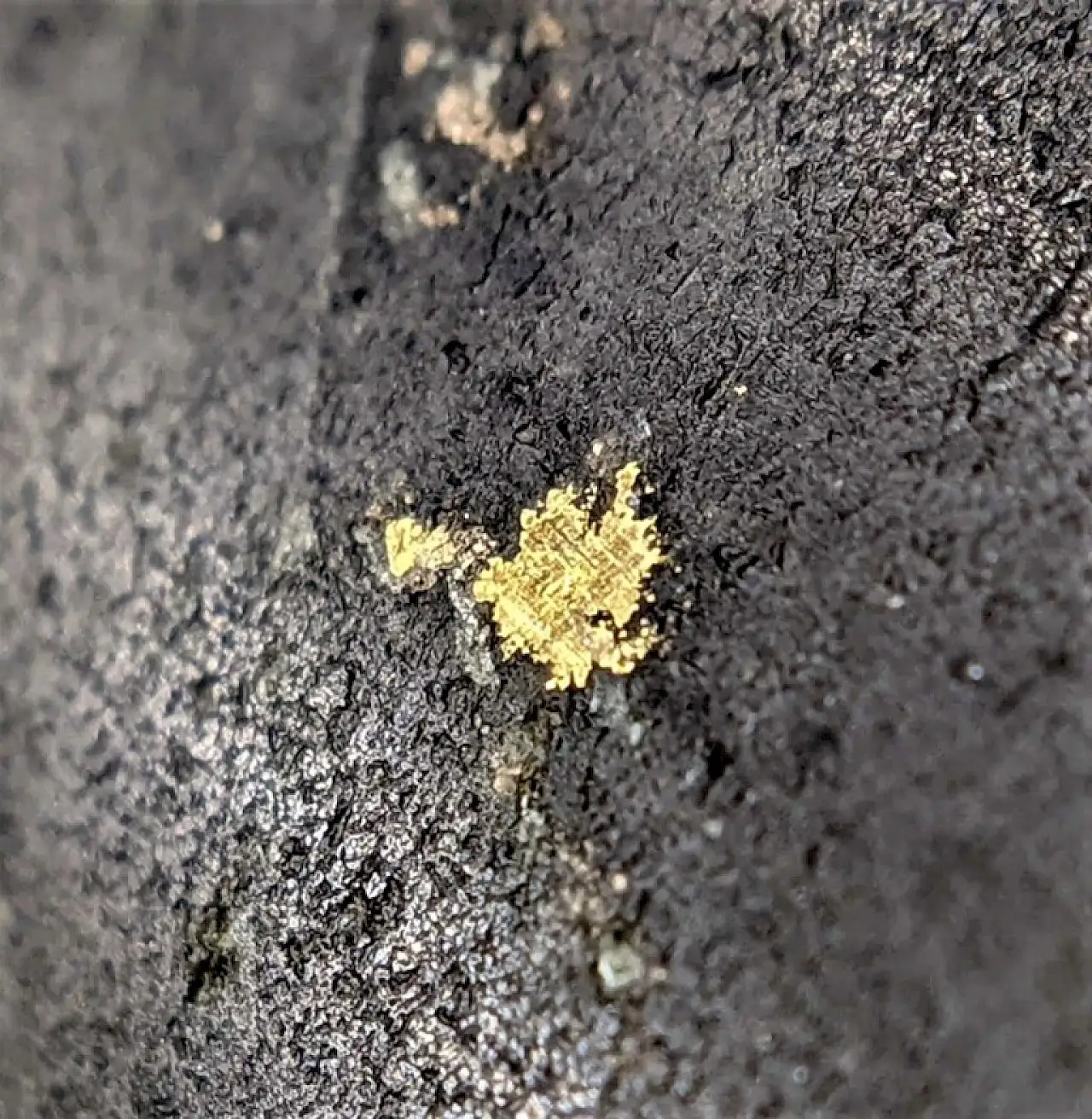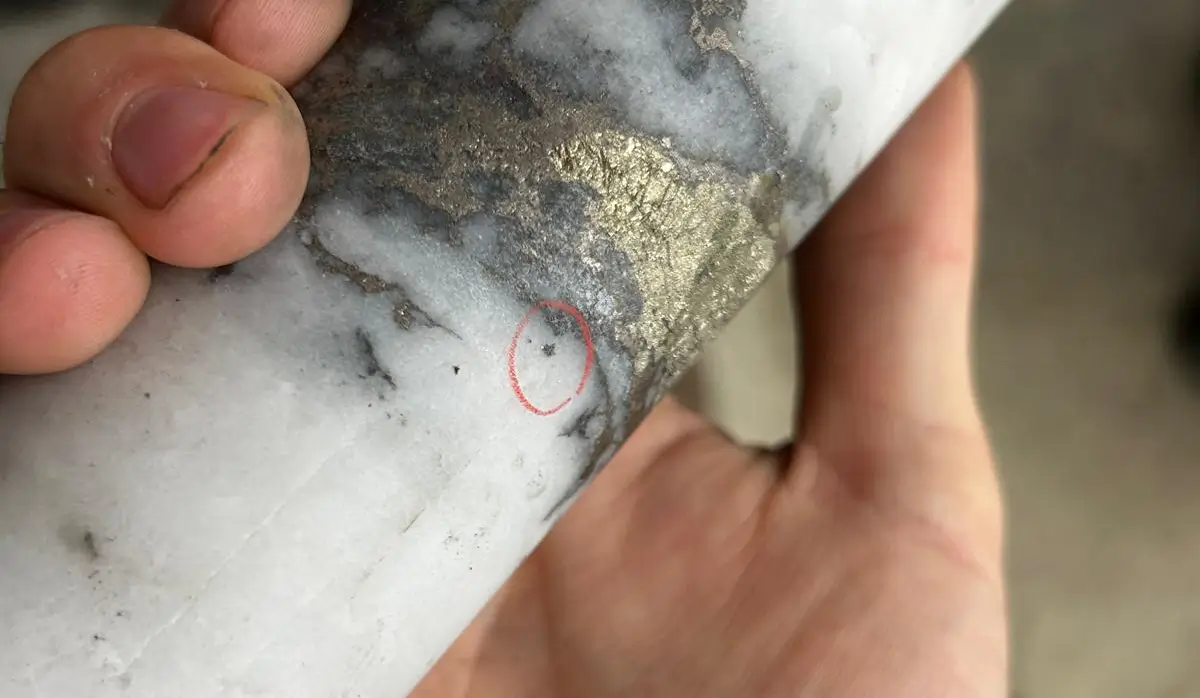2025 Season to Build on Acquired Data
In 2024, Golden Cariboo Resources Ltd. (CSE:GCC; OTC:GCCFF; FSE:3TZ) was very successful with its exploration work on the Quesnelle Gold Quartz Mine property. The project is located four kilometers north of Hixon in the center of the Canadian province of British Columbia. Multiple high-grade intersections with visible gold were encountered during drilling, and the known mineralization was further extended at the margins.
Golden Cariboo Resources’ exploration activities last year focused on drilling and mapping the entire bedrock. The geologists paid particular attention to understanding the structure and extent of the gold mineralization. The exploration program was launched in April 2024. It comprised a total of 5,500 meters of drilling, completed in 17 NQ surface diamond drill holes in three general areas.
The property-wide bedrock mapping and a 15-line kilometer MMI soil geochemistry survey rounded out the exploration work. These were completed in December 2024. It was encouraging that the program led to significant successes throughout the season.
In the Main Zone, three additional drill holes were placed and further zones of displacement rock were identified. Notable was drill hole QGQ24-05, which was drilled to 321.6 meters and yielded a series of intersections with more than 1 g/t gold over narrow intervals. The western extension of the Main Zone mineralization was in contact with black graphitic argillite, and the gold mineralization remains open at depth, to the east, and along the trend to the northwest and southeast. This presents geological potential beyond the mapped extent of the historic Quesnelle Quartz Mine workings.
North Hixon Zone Extended to the Northwest
In the North Hixon Zone, the first hole drilled here in 2022 had intersected visible gold. This discovery was further pursued last year with drill hole QGQ24-08, which intersected a 263.1-meter section mineralized with 0.29 g/t gold. This included 61.4 meters at 0.58 g/t gold and 89.7 meters at 0.43 g/t gold, as well as 0.99 g/t gold over a length of 24.6 meters.
A second drill hole, QGQ24-09, placed along the trend about 100 meters to the northwest, also extended the mineralization in a northwesterly direction. Bedrock mapping identified a potential southeastern extension of the North Hixon Zone, located about 137 meters southeast of drill hole QGQ24-08. Here, a grab sample yielded 1.27 g/t gold.
Multiple Intersections with Visible Gold Encountered at the Halo Deposit
In the Halo Zone, a total of twelve drill holes were successfully placed and completed. Several zones with visible gold were intersected. Particularly in the core of the Halo deposit, located 830 meters northwest of the historic Quesnelle Gold Quartz Mine and the Main Zone, multiple sections with visible gold were intersected.
Among the best results are 136.51 meters averaging 1.77 g/t gold in QGQ24-13 and 275.31 meters with 0.53 g/t gold in drill hole QGQ24-16. In the latter, mineralization begins at a depth of 39.01 meters, with the gold content even rising to 1.28 g/t over a length of 50.99 meters. Further success at the Halo deposit is indicated by the trend in this zone still being open in all directions.
In summary, the exploration work in 2024 on the Quesnelle Gold Quartz Mine successfully identified several parallel zones of gold mineralization. Among them are numerous high-grade zones with visible gold. Their core extends over a horizontal width of at least 600 meters and runs between the North Hixon Zone and the western edge of the Halo Zone. It extends over a strike length of at least two kilometers along the greenstone contact. Particularly encouraging is that the mineralization is still open in all directions.
The 2025 exploration season will build on these findings and aims to delineate the gold-bearing zones and target new areas. At this point, it will have a positive impact that Golden Cariboo Resources significantly expanded its mineral rights last year. Among other acquisitions, the company acquired a strategically located group of mineral claims covering 90,989 hectares, which borders the Quesnelle Gold Quartz Mine property and extends along a geological belt surrounding a regional intrusion.







